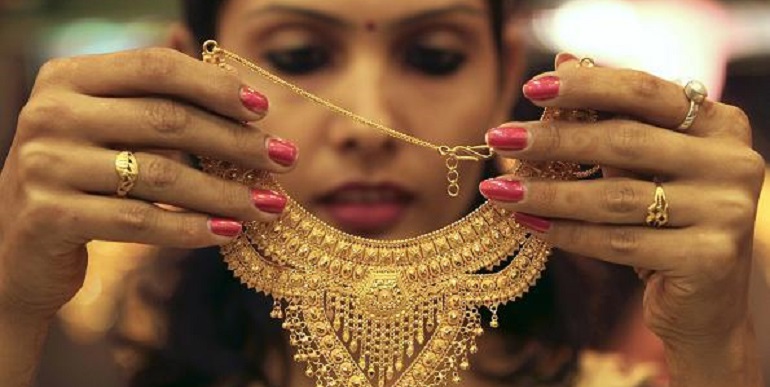
"Whether it’s in the Tamil community or any other community, if you’re wearing lots of jewelry or carrying lots of money, criminals will target you.” The police officer on the evening news was as polite as he could be.
My uncle watching the news nodded his head in agreement. "All these women, they don't change. Why are they wearing jewelry to temple? Why can't they go without it?" he asked in disbelief. There has been a string of gold robberies in Toronto and its suburbs, involving thieves snatching gold chains from aunties going to temple or taking their dogs for a walk. But the aunties have been fighting back. They have been wearing fake jewelry and voluntarily giving these pieces to thieves on demand and having a good laugh about it afterwards.
It is still ironic that my uncle chose to criticize women wearing jewelry to temples though. He has two bulging gold rings on his fingers. I often see him wearing a thick gold chain and gardening in his backyard without any shirt on. He lost the same chain the last time he went to the gym. "Bloody buggers...someone broke into my locker and took away my chain," he recounted.
What is it about Tamil people and their attraction to gold? Is it not just another precious metal that sits idle at home or in bank lockers most of the time? I was determined to find out.
My first stop was a wedding. There is no better place to find out about gold jewelry than a Tamil wedding. There is gold everywhere, whether it is real gold or decorations in golden color. There is gold jewelry on everyone from the bride and groom, all the way to the guests and little ones running around and playing tag in the wedding hall.
“What do you think about gold?” I asked the groom. He was puzzled and then composed himself. “Don’t talk to me about gold. I just spent 6k on a thaali,” he said dryly. The bride sitting next to him grinned—not sure why, but it may be because she was wearing jewelry from head to toe.
My next stop was a gold jewelry store with a blinking ‘open’ sign. The owner carefully looked at me from inside and buzzed me into the store. My face brightened as I entered from the visual pleasure of looking at all the well-crafted jewelry on display, like a child entering a candy store. It was gold galore. There was gold jewelry in every shape and size, in every artistic form for every visible part of the human body. There was jewelry made up of pure gold and pieces embedded with diamonds and gems. Gold has been considered an alternative investment in the financial world and the gold price tends to fluctuate with inflation and panics. The gold price shot up during the last financial crisis and the owner made a killing selling the inventory. I could glean it from the Mercedes parked outside her store.
Generally, Tamils don’t consider gold a financial investment. It is seldom sold unless as a last resort in financial difficulties. We tend to hoard while the rest of the world speculates buying and selling. It acts as an alternative currency in times of war and uncertainty. I remember my grandmother clinging to her jewelry as the only possession throughout the ordeals of the war.
Tamils’ association with gold begins from day we are born. From a gift of gold chain from a rich uncle on the 31st day celebration, to the chains and rings that will come as gifts on birthdays, puberty celebrations and weddings - all of which get recycled as time passes. It is considered part of the culture and heritage, a decorative item and a family asset that gets passed down, across generations and through children. Owning gold is considered a sign of wealth and wearing it, a show of affluence.
The gold price has fallen in recent months and along with it the robberies. The uncles and aunties are at peace with themselves. But in spite of the spikes in robberies, the love for gold has not gone down.
Images courtesy of International Business Times, Ebay.in and Pinterest.com.


























